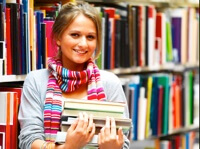Praque
Autor: maximus
Typ práce: Maturita
Typ práce: Maturita
Dátum: 29.12.2007
Jazyk:
Jazyk:
Rozsah: 1 320 slov
Počet zobrazení: 7 152
Počet zobrazení: 7 152
Tlačení: 684
Uložení: 741
Uložení: 741
General information:
Prague is the capital of the Czech Republic and the biggest city in our republic. It is in the centre of Bohemia and it spreads out on both banks on river Vltava. It covers area of 500 square kilometres and has 1.2 million inhabitants. It is divided into 10 districts. It is seat of the President, government and it isn't only a political centre but also culture centre, traffic centre and the centre of industry.
History:
Prague was founded in the 6th century by Slavs. This foundation is connected with Princes Libuše, who told that the future glory of Prague "would touch the stars”. In the 10th century was founded Vyšehrad castle. It was build as a temporary seat of Přemyslid dynasty. It is the oldest castle in Prague. In the 14th century lived in Prague the most famous emperor of Czech Monarchy Charles IV. He established there an Archbishopric in 1344, founded Charles University (1348) and New Town. He also promoted the building of Charles Bridge and St. Vitus Cathedral with 30 statues in Baroque style. It is the second oldest bridge in our country. In the 15th century Prague was the centre of the Hussite movement, which was one of the consequences of execution of John Huss. It was defeated on the Vítkov Hill. In the16th century was Prague the seat of Rudolph II, who invited artists and scientists there. In 1620 on The White Hill was defeated an uprising against Habsburg dynasty. And a few months later were 27 leaders of this uprising executed on the Old Town Square. Now there are 27 crosses on the floor. The Thirty Years War, re-catholicization and germanization followed. In 1918 Prague became the capital of Czechoslovakia, newly established state with President Tomáš Garigue Masaryk. In 1939 Czechoslovakia was split into Czech and Slovakia. Czech was occupied by Germany and it was refreshed in 1945. Since 1948 till the Velvet Revolution in 1989 was Czechoslovakia under the reign of communistic party. In 1990 it split again into two republics.
Life in Prague:
Now Prague is the capital of a democratic state, consists of Bohemia, Moravia and Slesia. It is a big city and you can get there by train, that is the cheapest way, by bus or if you have enough money also by air. This way is mainly for foreigners. In Prague you can travel by underground, it is quick and relatively cheap or by bus or tram. Tickets are same for all this means of transport and you can buy a day ticket, three-day ticket or mount ticket, which save your money. On summer you can also hire a boat and have a trip on the river or you can hire a horse-cart or some of the sightseeing trams. The most expensive way of transport is going by taxi. It is quite big risk because the taxi drives cheat and charge more than they are allowed to. Taxis are not also very quick because streets are full of cars and buses. It isn't problem to get to Prague but the problem is accommodation. The cheapest are youth hostels. However, these hostels are very uncomfortable, you sleep with several people in one room and have no privacy and the staff is quite unpleasant. Hotels are more comfortable but also more expensive. The most famous hotels and the most expensive are Intercontinental, Forum, Palace and Savoy. A compromise between comfort and price can be bed and breakfast or private accommodation. In summer you can also live in a camp in tent. It is more comfortable and cheaper than a youth hostel but you must be careful about thieves. In conclusion we can say that life in city is faster than life in a village or a small town and people are more aggressive because they don't know each other even by sight. City is very anonymous, you live there without a face.
Sightseeing:
The natural centre of Prague is Wenceslas Square, it is the heart of New Town. It is 750m long and lined with banks, department stores, boutiques, shops, hotels, restaurants, cafés, theatres and cinemas. At the top of the square there is a bronze equestrian statue of St. Wenceslas made by J. V. Myslbek. This is a favourite place for tourists and that’s why it is so expensive. There are many street-stalls with souvenirs from Prague, ridiculous caps, postcards and guides. Above there is a building of National Museum, which is renowned by its mineral collection. You can find there also exposition of Prague history, archaeological diggings drawings, models of architecture, etc. If you go straight down to the bottom of the square and turn to the right, you come to the famous Tyl (or German or Stavovské) Theatre. It s a very nice building and behind it there is the oldest university in centre Europe, founded by Charles IV. in 1348 – The Charles University. It isn’t far from Old Town Square, the oldest square in Prague. In the centre there is monument of John Huss made by Šaloun. On the ground of the square there is a sign for Prague meridian . The most interesting for tourist is Old Town Hall with astronomical clock, made by Mr. Hanuš. Each hour you can hear the bell and see the procession of twelve Apostles and a skeleton the symbol of passing times. There is also quite well known Týn Church and Kafka’s bookshop. You can go down to the Jewish Town. Most of this town was damaged by Germans during the second year war. Till now only some synagogues remained. The best known synagogue is New Old Synagogue, it is the oldest and it is used for Jewish worship services, and Pinkas Synagogue. On the walls in this Synagogue there are names of victims of Nazi terror. Beside it there is a Jewish cemetery with a grave of Rabbi Löw, where you can give a small paper with your secret wish and it will come true. There is also a Jewish museum. You can go down to Vltava river and you can see there The National Theatre build in 1868 by public. When you go along the river, you came to Charles Bridge, the second oldest one in Czech Republic. On the both ends of this bridge there are bridge-towers, each one is different. This bridge is decorated with 30 statues in Baroque style made by Jan Brokof and Matyáš Brown. It is said that the statue of John Nepomuk make your dreams come true. There is a lot of artists and musicians, stalls with pictures of Prague and stalls with jewellery. The Bridge Street leads to Lesser Town square, where is St. Nicolas Church. When you go up along Neruda Street, you come to the Prague Castle, the seat of President. It is a monumental complex of buildings. The most renowned are Vladislav Hall, Spanish Hall and Rudolph Gallery. From the squares outside you can admire the City below with hundreds of spires. In the central courtyards stands St. Vitus Cathedral, made in Gothic style. It was found by Charles IV. in a connection with establishment of the Prague Archbishop. It is result of work of two architects Petr Parléř and Matthias of Arras. The most admired parts are St. Wenceslas Chapel and the coronation chamber. But the Prague Castle is not the oldest one. The oldest one is Vyšehrad Castle with Slavín cemetery where Czech artists, writers and rich Prague citizens are buried. Near it there is a St. Paul’s and Peter’s Cathedral. In nearby park there are copies of Myslbek’s statues. Other interesting thing in Prague is Petřín Hill with Petřín Observation Tower, free copy of Eiffel Tower. It affords a magnificent view of the Prague. You can also find a Zoo in Prague in Troja or an exhibition place with theatres and Křižík fountain, which spirts the water in the tune of the musik in the lights of different colours.
Prague is the capital of the Czech Republic and the biggest city in our republic. It is in the centre of Bohemia and it spreads out on both banks on river Vltava. It covers area of 500 square kilometres and has 1.2 million inhabitants. It is divided into 10 districts. It is seat of the President, government and it isn't only a political centre but also culture centre, traffic centre and the centre of industry.
History:
Prague was founded in the 6th century by Slavs. This foundation is connected with Princes Libuše, who told that the future glory of Prague "would touch the stars”. In the 10th century was founded Vyšehrad castle. It was build as a temporary seat of Přemyslid dynasty. It is the oldest castle in Prague. In the 14th century lived in Prague the most famous emperor of Czech Monarchy Charles IV. He established there an Archbishopric in 1344, founded Charles University (1348) and New Town. He also promoted the building of Charles Bridge and St. Vitus Cathedral with 30 statues in Baroque style. It is the second oldest bridge in our country. In the 15th century Prague was the centre of the Hussite movement, which was one of the consequences of execution of John Huss. It was defeated on the Vítkov Hill. In the16th century was Prague the seat of Rudolph II, who invited artists and scientists there. In 1620 on The White Hill was defeated an uprising against Habsburg dynasty. And a few months later were 27 leaders of this uprising executed on the Old Town Square. Now there are 27 crosses on the floor. The Thirty Years War, re-catholicization and germanization followed. In 1918 Prague became the capital of Czechoslovakia, newly established state with President Tomáš Garigue Masaryk. In 1939 Czechoslovakia was split into Czech and Slovakia. Czech was occupied by Germany and it was refreshed in 1945. Since 1948 till the Velvet Revolution in 1989 was Czechoslovakia under the reign of communistic party. In 1990 it split again into two republics.
Now Prague is the capital of a democratic state, consists of Bohemia, Moravia and Slesia. It is a big city and you can get there by train, that is the cheapest way, by bus or if you have enough money also by air. This way is mainly for foreigners. In Prague you can travel by underground, it is quick and relatively cheap or by bus or tram. Tickets are same for all this means of transport and you can buy a day ticket, three-day ticket or mount ticket, which save your money. On summer you can also hire a boat and have a trip on the river or you can hire a horse-cart or some of the sightseeing trams. The most expensive way of transport is going by taxi. It is quite big risk because the taxi drives cheat and charge more than they are allowed to. Taxis are not also very quick because streets are full of cars and buses. It isn't problem to get to Prague but the problem is accommodation. The cheapest are youth hostels. However, these hostels are very uncomfortable, you sleep with several people in one room and have no privacy and the staff is quite unpleasant. Hotels are more comfortable but also more expensive. The most famous hotels and the most expensive are Intercontinental, Forum, Palace and Savoy. A compromise between comfort and price can be bed and breakfast or private accommodation. In summer you can also live in a camp in tent. It is more comfortable and cheaper than a youth hostel but you must be careful about thieves. In conclusion we can say that life in city is faster than life in a village or a small town and people are more aggressive because they don't know each other even by sight. City is very anonymous, you live there without a face.
Sightseeing:
The natural centre of Prague is Wenceslas Square, it is the heart of New Town. It is 750m long and lined with banks, department stores, boutiques, shops, hotels, restaurants, cafés, theatres and cinemas. At the top of the square there is a bronze equestrian statue of St. Wenceslas made by J. V. Myslbek. This is a favourite place for tourists and that’s why it is so expensive. There are many street-stalls with souvenirs from Prague, ridiculous caps, postcards and guides. Above there is a building of National Museum, which is renowned by its mineral collection. You can find there also exposition of Prague history, archaeological diggings drawings, models of architecture, etc. If you go straight down to the bottom of the square and turn to the right, you come to the famous Tyl (or German or Stavovské) Theatre. It s a very nice building and behind it there is the oldest university in centre Europe, founded by Charles IV. in 1348 – The Charles University. It isn’t far from Old Town Square, the oldest square in Prague. In the centre there is monument of John Huss made by Šaloun. On the ground of the square there is a sign for Prague meridian . The most interesting for tourist is Old Town Hall with astronomical clock, made by Mr. Hanuš. Each hour you can hear the bell and see the procession of twelve Apostles and a skeleton the symbol of passing times. There is also quite well known Týn Church and Kafka’s bookshop. You can go down to the Jewish Town. Most of this town was damaged by Germans during the second year war. Till now only some synagogues remained. The best known synagogue is New Old Synagogue, it is the oldest and it is used for Jewish worship services, and Pinkas Synagogue. On the walls in this Synagogue there are names of victims of Nazi terror. Beside it there is a Jewish cemetery with a grave of Rabbi Löw, where you can give a small paper with your secret wish and it will come true. There is also a Jewish museum. You can go down to Vltava river and you can see there The National Theatre build in 1868 by public. When you go along the river, you came to Charles Bridge, the second oldest one in Czech Republic. On the both ends of this bridge there are bridge-towers, each one is different. This bridge is decorated with 30 statues in Baroque style made by Jan Brokof and Matyáš Brown. It is said that the statue of John Nepomuk make your dreams come true. There is a lot of artists and musicians, stalls with pictures of Prague and stalls with jewellery. The Bridge Street leads to Lesser Town square, where is St. Nicolas Church. When you go up along Neruda Street, you come to the Prague Castle, the seat of President. It is a monumental complex of buildings. The most renowned are Vladislav Hall, Spanish Hall and Rudolph Gallery. From the squares outside you can admire the City below with hundreds of spires. In the central courtyards stands St. Vitus Cathedral, made in Gothic style. It was found by Charles IV. in a connection with establishment of the Prague Archbishop. It is result of work of two architects Petr Parléř and Matthias of Arras. The most admired parts are St. Wenceslas Chapel and the coronation chamber. But the Prague Castle is not the oldest one. The oldest one is Vyšehrad Castle with Slavín cemetery where Czech artists, writers and rich Prague citizens are buried. Near it there is a St. Paul’s and Peter’s Cathedral. In nearby park there are copies of Myslbek’s statues. Other interesting thing in Prague is Petřín Hill with Petřín Observation Tower, free copy of Eiffel Tower. It affords a magnificent view of the Prague. You can also find a Zoo in Prague in Troja or an exhibition place with theatres and Křižík fountain, which spirts the water in the tune of the musik in the lights of different colours.
Kľúčové slová
Vyhľadaj ďalšie študentské práce pre tieto populárne kľúčové slová:
#prague #National theatre prague #find the price of a train ticket in the pictureOdporúčame
Cudzie jazyky » Angličtina
:: Exchange Rates Euro
:: KATEGÓRIE – Referáty, ťaháky, maturita:
Vygenerované za 0.014 s.
















